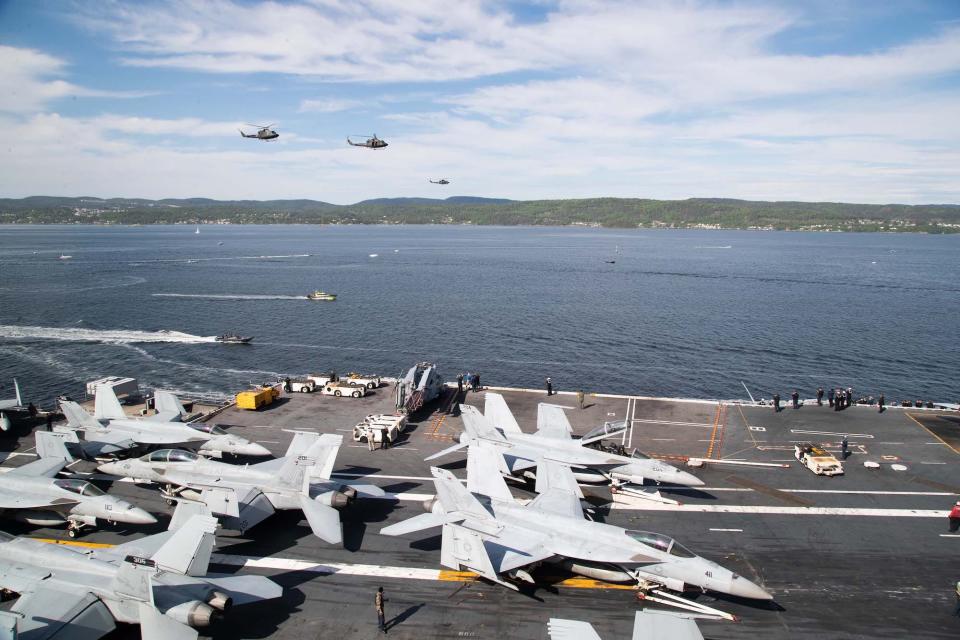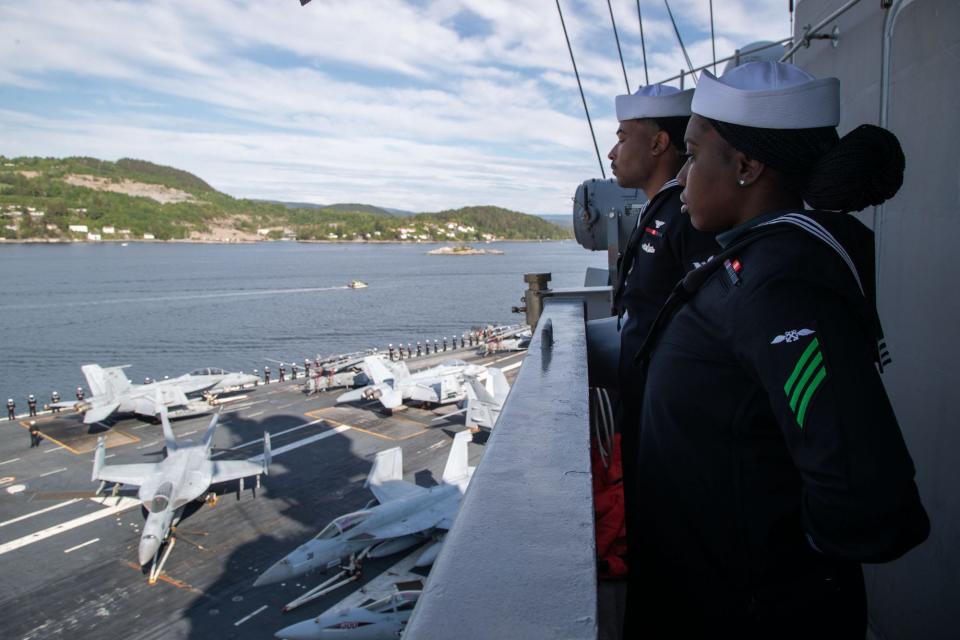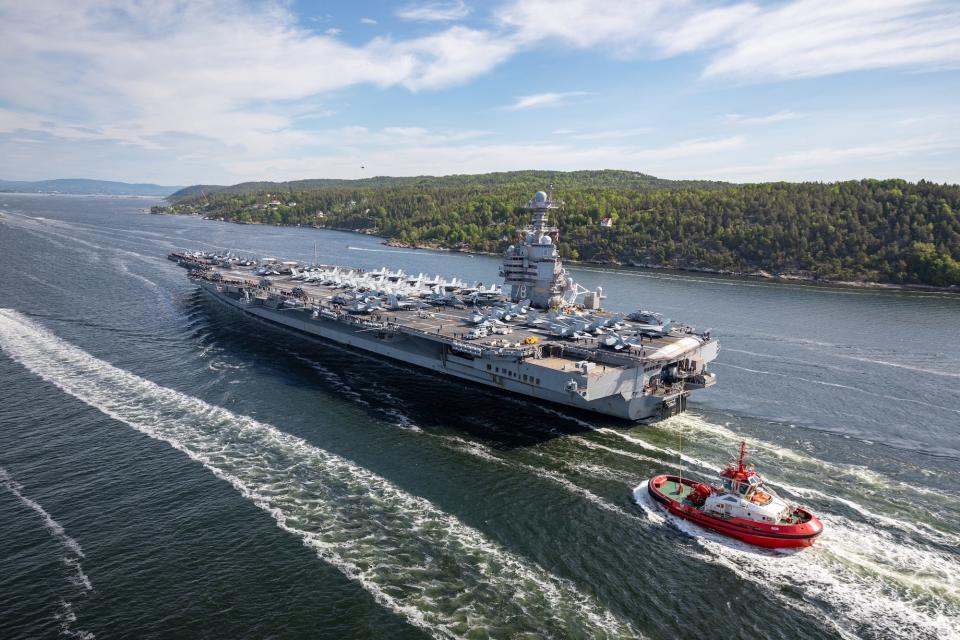On its first deployment, the US Navy's newest aircraft carrier makes historic visit near NATO's northern frontline with Russia

US Navy aircraft carrier USS Gerald R. Ford arrived in Oslo for a port call on Wednesday.
The Ford is the first US aircraft carrier to visit Norway in 65 years, according to the US Navy.
The visit reflects NATO's increasing focus on the North Atlantic and Arctic amid tension with Russia.
USS Gerald R. Ford arrived in Oslo on Wednesday morning, making the US Navy's newest aircraft carrier the first US flattop to visit Norway in over six decades.
The visit, which is the first stop on Ford's first operational deployment, reflects the increasing focus that NATO navies have put on the waters of the North Atlantic and the Arctic amid heightened tensions with Russia.
Ford departed Norfolk, Virginia on May 2, sailing for the first time as part of a carrier strike group. It is deployed to the US Navy Europe-Africa area of operations and has conducted "joint and combined" training and operations "to help reduce maritime risks associated with increased activity in the high north," the Navy said in a press release.

On Monday, US and Norwegian officials visited the Ford as it operated in the North Sea. The carrier has integrated a Norwegian frigate into its strike group, displaying US and Norwegian interoperability and "building collective operational experience at-sea," the Navy said.
By making its first port call in Oslo, the Ford became the first US aircraft carrier to visit Norway in 65 years, a milestone that underscores increasing defense cooperation between the US and Norway as well as NATO's broader focus on improving its ability to operate in the North Atlantic and the Arctic.
During a major NATO exercise in late 2018, USS Harry S. Truman became the first US aircraft carrier to sail into the Arctic in nearly 30 years. Since then US warships have "routinely been in the high north," the US Navy's top officer said last year, referring to a historic deployment to the Barents Sea in 2020 and a short-notice deployment to the North Atlantic in 2022.
Last spring, the British Royal Navy sent HMS Prince of Wales into the Arctic for seven weeks, the first deployment to the region by either of the UK's new Queen Elizabeth-class carriers.

US and Norwegian officials both hailed the Ford's visit to Oslo.
Norway's defense minister called "a clear expression of the security guarantees" provided by NATO and of the "close cooperation and partnership" Norway has with the US. Ford's commanding officer, Capt. Rick Burgess, called it "an honor, joy, and thrill to visit Oslo and show our cherished partner the Navy's newest class of aircraft carriers."
While in Oslo, local officials will visit the carrier and US sailors will tour the city. Thousands of people lined the shores of Oslo's fjord the see the Ford as it arrived, causing traffic backups, according to Norwegian media.
The Ford's nuclear reactors also prompted specific precautions. Norway's Directorate for Radiation Protection and Nuclear Safety helped plan the visit and and Oslo's waters will be tested for radiation before, during, and after the carrier's stay.

US officials have said little about where the Ford will go and what it will do during its deployment, and it's not clear the carrier will actually sail into the Arctic — Burgess told Norwegian media that the ship's crew "looks forward to work by the Arctic Circle" — but the ship's port call in the Norwegian capital comes as NATO forces conduct a major air- and missile-defense exercise called Formidable Shield in the North Atlantic.
Russia's powerful Northern Fleet — which is based on the Kola Peninsula near the border with Norway and operates submarines that are a growing concern for NATO militaries — also announced drills this week, notifying ships and aircraft to avoid a vast swath of the Barents Sea from Wednesday to Friday.
While Ford's stop in Oslo is historic, US Navy vessels are visiting Norway more often. US submarines — the whereabouts of which are usually closely guarded — have become a more frequent presence in Norwegian ports, which allow those subs to pick up supplies and return to their operating areas more quickly.
"We have increased activity in the Atlantic. We keep a very close eye on that, and our NATO partners and allies are absolutely critical to that," Vice Adm. William Houston, commander of US submarine forces, said in April.
Read the original article on Business Insider

 money
money 